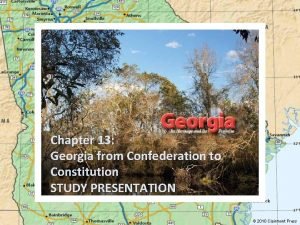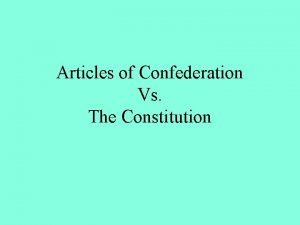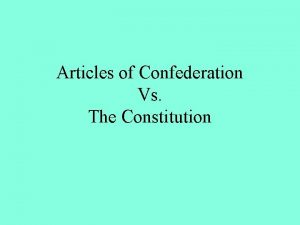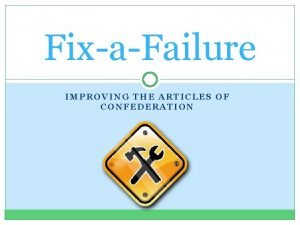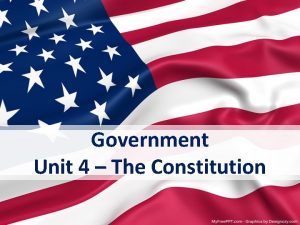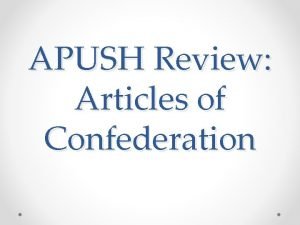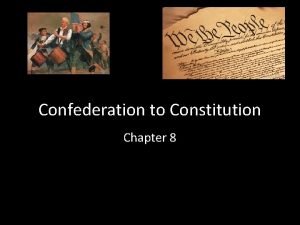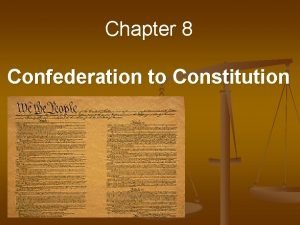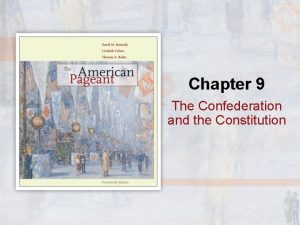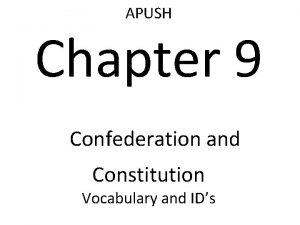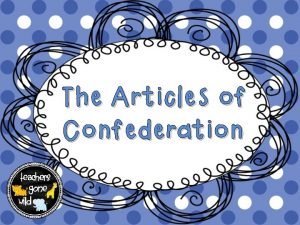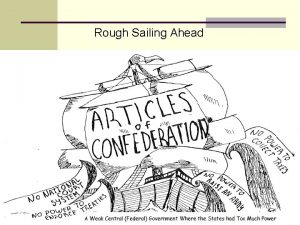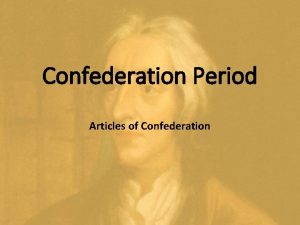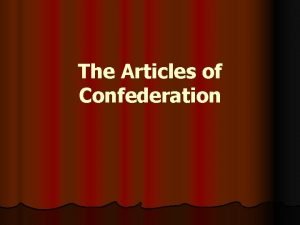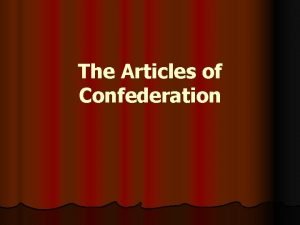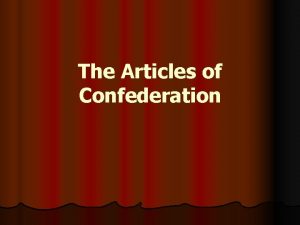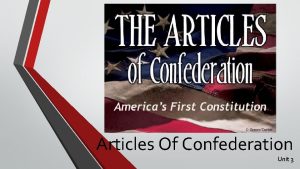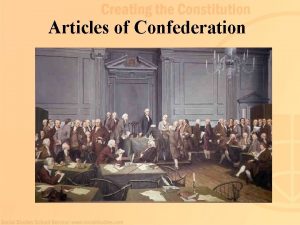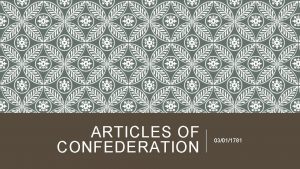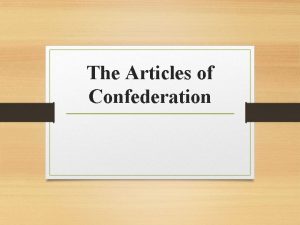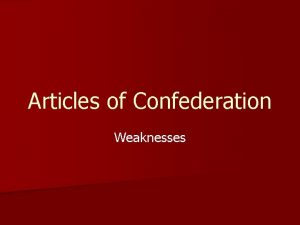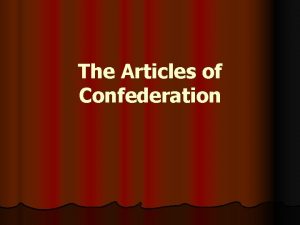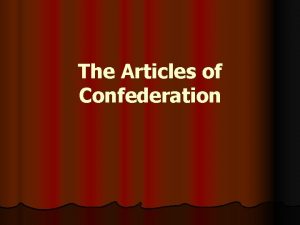Articles of Confederation Vs The Constitution Warm Up












- Slides: 12

Articles of Confederation Vs. The Constitution

Warm Up: 10/11/19 Please open to your 3. 1 guided notes from yesterday. We will complete those before moving on. Turn and talk: What were ‘patriots’? What were ‘loyalists’? Can you name any specific ones?

Warm Up: 10/11 • Please open to your warm up section • Title this entry: – Articles of Confederation vs Constitution • Create a chart like the one below: Issues Taxes/Money Courts President Military Power Laws Articles Constitution

Today we will: • Describe problems that persisted with the U. S. Constitution even after it replaced the Articles of Confederation • Verbally and in writing • Using textual evidence • Key Concept 3. 2

Background: • Fill in the note catcher you created during warm up • Articles of Confederation vs Constitution • Bullet notes or ideas are ok • Complete sentences not required

Articles of Confederation • Dates: 1781 -1787 • Type of Government: Confederation-firm league of friendship among the 13 states • Branches of government: one- a unicameral Congress; executive and legislative duties combined in Congress • President? No, Congress performed both executive and legislative functions

• Who has the power? States held the most power! • Weaknesses of Articles: – – – – – Gave each state one vote regardless of size Gave Congress no power to tax No president No judicial branch Provided no common currency No power over trade No coercive power Amendment only with the consent of all states No army

The Constitution • Dates: Ratified 1789 - present! • Type of Government: Federal governmentpower divided between a central government and state governments • Branches of government: yes- 3 – Executive (carries out the laws) – Legislative (makes the laws) – Judicial (interprets the laws) • President? yes

• Who has the power? Federalism: power divided between national and state governments • Problems “fixed” under the Constitution: – Bicameral Congress- one house based on pop. and the other on equal representation – Congress may tax – Created a President – Separate judicial branch – Congress has power to coin money – Congress has power to regulate foreign and interstate commerce – States have powers but are limited by the Constitution – 2/3 of congress can propose an amendment to the Constitution; ¾ of states needed to ratify an Amendment – Congress can create army/navy

What about Slavery? • Examine the 2 excerpts – Final draft of Declaration of Independence – Rough draft of Declaration of Independence • Respond to the 2 follow-up questions in complete sentences

Slavery in the Constitution: • Read the conversation from the Constitutional Convention • Complete the graphic organizer: – According to each person, was slavery a problem? – If no, why not? If yes, what was more important than ending slavery?

Historical Interpretations: • Examine the secondary source texts • Complete the graphic organizer: – According to each author, was slavery a problem? – If no, why? If yes, what was more important than ending slavery?
 Articles of confederation vs constitution
Articles of confederation vs constitution Articles of confederation vs constitution chart
Articles of confederation vs constitution chart Constitution vs articles of confederation
Constitution vs articles of confederation What was wrong with the articles of confederation
What was wrong with the articles of confederation Articles of confederation vs constitution
Articles of confederation vs constitution Articles of confederation vs constitution apush
Articles of confederation vs constitution apush Chapter 8 confederation to constitution
Chapter 8 confederation to constitution Chapter 8 confederation to constitution
Chapter 8 confederation to constitution Chapter 9 the confederation and the constitution
Chapter 9 the confederation and the constitution Chapter 9 confederation and constitution
Chapter 9 confederation and constitution Shays rebellion clipart
Shays rebellion clipart Articles of confederation
Articles of confederation Rough sailing ahead political cartoon source
Rough sailing ahead political cartoon source
